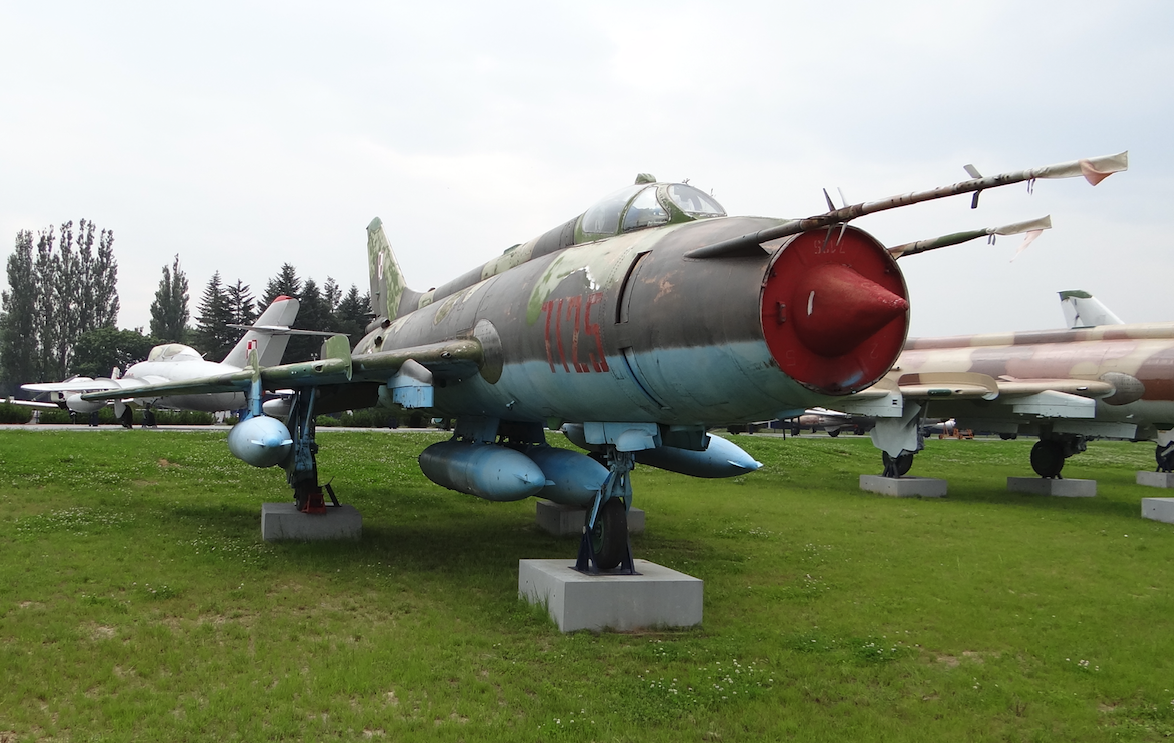Collision of the Su-20 aircraft with the bomb. 1986-03-10
Captain pilot Czesław Gibaszewski.
In the training process of Su-20 aircraft crews there was also interception of air targets with the use of guided missiles of the air-air class. In Poland, such exercises are carried out on the Ustka maritime training ground. The Su-20 aircraft squadron was moved to the airport located on the coast. The task was performed as follows; as the first, PZL Lim-6 supersonic aircraft started. In the designated area, these planes reached a ceiling of 10,000 m and dropped the bombs. Illuminating bombs burned down for several minutes on parachutes as an easy target for infrared-directed rockets.
As the penultimate pilot, Czesław Gibaszewski took off at 15:05. It was not the first time he did such a task. Clear skies, visibility 15 km, sea state 3 on the Beaufort scale. The Su-20 plane quickly increased to 8,500 m and after a few minutes it took the northern direction to the Baltic Sea. The aircraft at the speed of 1,000 km / h crossed the coastline and at 15:30 it was on the edge of the attack. The aircraft guided the navigator from the ground with the use of radiolocation stations. The pilot was carrying out commands from the ground. The moment the pilot saw his target, he chose the type of weapon on the missile launching device. In the crosshairs he led the "brand" to a shining point. He pressed the button on the control stick. It came to him that the projectile had come down, but…
Now events have gone on quickly. The plane shook. The pilot heard a bang. The pilot went through the thought – “The plane collided ! But I do not know what subject ?” There was no time to think about it. The plane threw to the left with simultaneous rotation along the axis. The plane was losing altitude. The pilot turned on the radio and notified about the loss of spatial orientation. He turned on the autopilot so that he would lead the plane to a horizontal flight. Did not help. The machine tumbled and went into a steep spin. She made three rolls when the pilot said he was catapulting. Overloaded. He struggled to assume the correct position for catapulting. The pilot hung on his belts. Finally, he put his legs on the footrests correctly, hands on the handles and started catapulting.
Suddenly, a powerful force pulled the pilot up. He lost consciousness for a few seconds, because he does not remember how the cabin cover fell off and how the seat left the plane. The pilot woke up in the air. He somersaulted in the air. He felt a jerk up. The armchair beneath him was gone, and he saw the white-orange canopy of the parachute above his head. He was relieved, but he realized that he had a sea under him. The parachute opened at a height of about 3,000 m, so 6-8 minutes was left for launching. The pilot reflexively pulled the parachute lines to direct itself towards the visible land. The pilot had no interest in getting to shore. He must prepare for launching. It is important that he is whole and healthy.
The pilot had to fill the pontoon boat – dinghy. The rescue boat was in the tray under the seat. The pilot jerked, so the cord. The orange bundle fell out and hung several meters below. The pontoon boat automatically filled with gas. The pilot then filled the life jacket by pulling the valve lever in the lower part. He heard the hissing of carbon dioxide that filled the vest. The pilot also prepared a parachute harness by spanning it and grabbing two load-bearing belts. He waited for contact with water.
The pilot does not know at what height he released the parachute harness. It could have been 15 m, maybe 5 m. The parachute remained upside down by the wind. The pilot fell into the water. Before he could make any move, the vest lifted him to the surface of the water and put it on his back. The pilot pulled the boat with the help of a cable. Entering its did not cause him a problem. He practiced it many times on the lake. Now he could rest for a moment.
The pilot activated the emergency radio and heard silent signals; ti, ti ti. The radio station was working. Then the pilot could not know that the signals did not reach, because the antenna was damaged. Despite this, the pilot was quickly found and taken aboard a navy helicopter. Analysis of the accident showed the impact of the aircraft on the light bomb.

Written by Karol Placha Hetman
